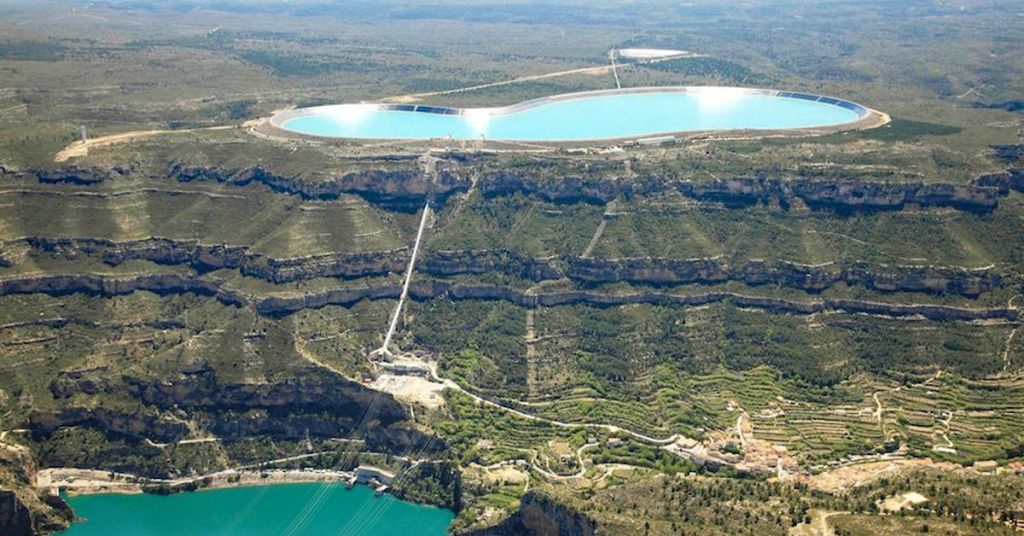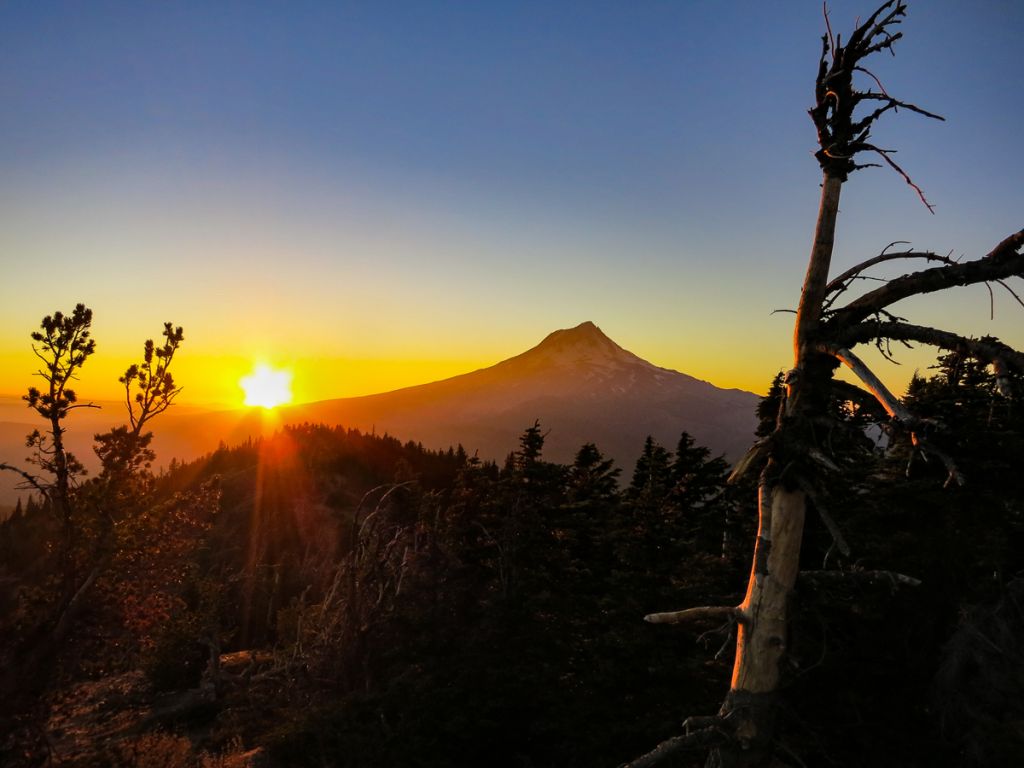The secret is out. Now, a diverse coalition of interests is pushing to designate the Owyhee Canyonlands as a national monument
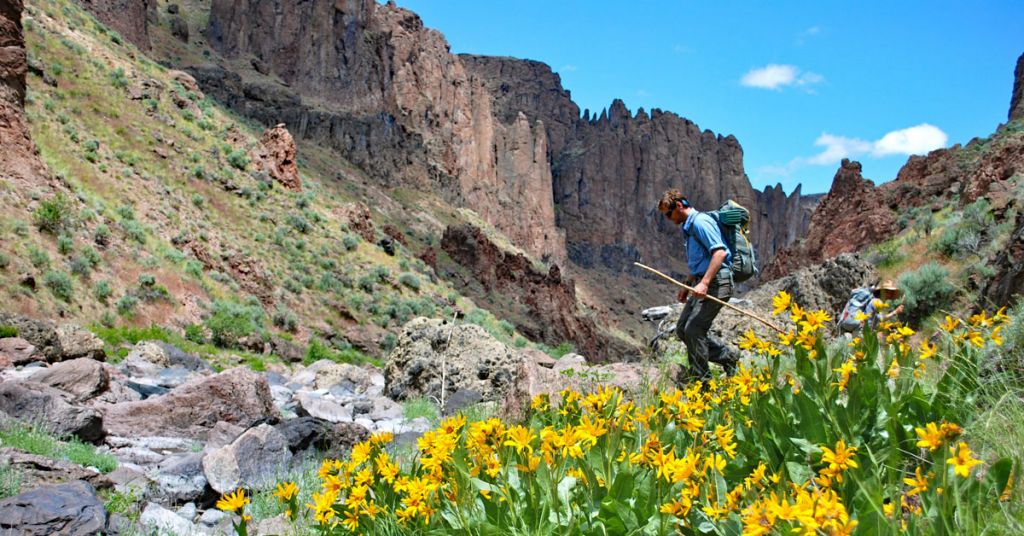
The solitude and lack of apparent human influence is fading around places like the West Little Owyhee River. Photo: Tim Neville
By Sally Krutzig/Idaho Statesman. May 30, 2024. Just southwest of Boise lies one of the last vast swaths of solitude in the United States.
The Owyhee Canyonlands, with stunning red gulches, winding rivers and a moon-like landscape where a volcano with a caldera once 600 times larger than Mount St. Helens erupted, stands as the largest unprotected wilderness area in the American West.
Locals might have once seen the Owyhees as the area’s best-kept secret: national park-quality wilderness without the tourists.
Advocates say those days are gone.
The secret is out, they say, and the repercussions of not enacting federal protections could be irreversible—to the point that even those most skeptical of government regulation agree that the Owyhees are facing unprecedented change.
The number of people visiting the Owyhees has grown along with Idaho’s Treasure Valley’s population. The Lower Owyhee Canyon and Lake Owyhee have seen an average of 250,000 visitors per year for the past seven years, according to the nonprofit group Friends of the Owyhee.
A viral social media video of Leslie Gulch garnered more than 21 million views and attracted international travelers.
Advocates say that influx—along with a complicated mix of unregulated recreation, invasive species, wildfires and mining claims—could irrevocably damage the pristine beauty of the 7 million-acre wilderness.
The edge of the Owyhees is located about 60 miles southwest of Boise and extends past the Nevada-Oregon state line. Just 5% of that public land, most of which falls under the Bureau of Land Management, is permanently protected.
Stakeholders want that to change.
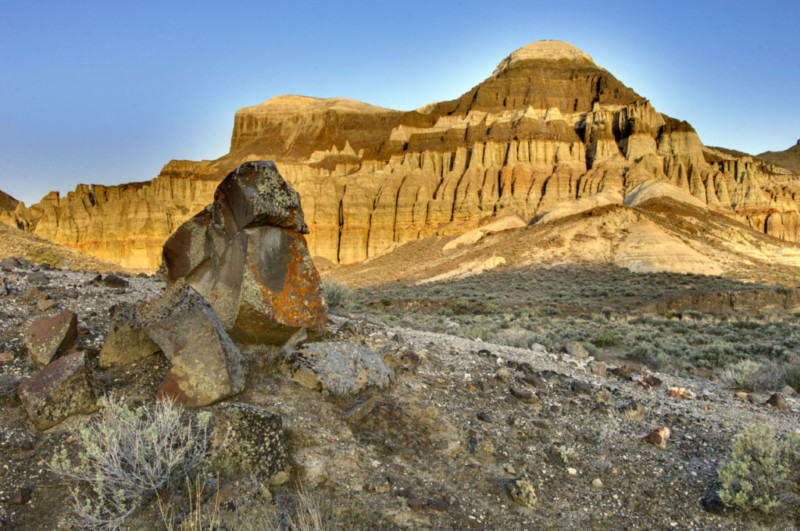
Pretty peril: Owyhee country. Photo: Greg Burke, ONDA
Last month, Protect the Owyhee Canyonlands, a coalition of at least 14 groups, including the National Wildlife Federation, invited the Idaho Statesman to tour the Owyhees for an inside look at the deserts, plants, farmland and wildlife, and offer a glimpse at what conservation groups are hoping to modify when it comes to protection for the land.
Advocates have been fighting to protect the land for nearly a decade. In 2015, groups petitioned former President Barack Obama to designate the Owyhees as a national monument.
Efforts seemed promising until January 2016, when the armed occupation of the nearby Malheur National Wildlife Refuge, led by far-right activist Ammon Bundy, made any type of environmental protection of the area too contentious of an issue for politicians, according to Ryan Houston, executive director at the Oregon Natural Desert Association.
Bundy’s fight against federal public land regulations garnered support and sympathy from some factions.
In 2019, a coalition of local ranchers and business leaders joined with environmental groups to seek protections that both sides agreed were needed. They worked with Democratic Sen. Ron Wyden of Oregon to draft legislation, leading to last year’s Malheur Community Empowerment for the Owyhee Act.
The bill would create a wilderness designation with a “monitoring network” of local ranchers, environmental organizations and tribal representatives to oversee the protection of one million acres of the Owyhees.
The bill’s lack of movement, however, is worrying conservationists.
It hasn’t progressed since passing the Senate Energy and Natural Resources Committee in December.
[perfectpullquote align=”full” bordertop=”false” cite=”” link=”” color=”” class=”” size=””]The Owyhees are home to 26 plants that can’t be found anywhere else in the world.[/perfectpullquote]
Aaron Kindle, National Wildlife Federation director of sporting advocacy, said environmental pushes can make legislators nervous, especially during a big election year.
Now, Protect the Owyhee Canyonlands, an alliance of at least 14 different groups, has made the next push—asking President Joe Biden to designate the Owyhee Canyonlands as a national monument.
“Conservation, for those of us who’ve been in it for a long time, is an interesting game,” Kindle said. “I think right now, folks know things aren’t exactly functional in Congress at times. You’ve got to be creative and think of different ways to get these things done.”
Ranchers in Malheur County, Oregon, home to much of the Owyhees, remain skeptical of too many restrictions and are wary of monument status.
Elias Eiguren, a fourth-generation Malheur County rancher, is treasurer of the Owyhee Basin Stewardship Coalition, the group that worked with conservationists on Wyden’s bill. The group first came together as a voice against the Owyhees becoming a national monument nearly a decade ago.
While advocates say they are seeking a plan that would keep ranchers’ rights intact, Eiguren said it’s hard to trust that will happen when his family’s livelihood depends on their roughly 500 cattle having access to BLM grazing land.
“There’s been a lot of history between us and some of the environmental groups that we’re working with, and over the past two or three decades, it hasn’t been very good,” Eiguren told the Idaho Statesman by phone. “They’ve gone down the route of lawsuits and taking us to court.”
Yet even those in the Owyhee Basin Stewardship acknowledge that the Owyhees land is changing at an alarming rate, and protections are needed.
Eiguren said that as he’s gotten older, he’s seen more tourists, more wildfire, more invasive weeds and less wildlife.
“There was nobody out there when I was a kid,” Eiguren said. “We never saw anybody. It was just a handful of cattle ranchers. Now, especially in the summer months, you’ll see vehicles three, four times a week. Convoys coming through, groups of people that are going on tours. So it’s changed quite a bit.”
The idea of the Owyhees becoming a national monument isn’t implausible.
In 2022, Biden launched the billion-dollar America the Beautiful Initiative through an executive order that, among other things, looks to support “locally led conservation efforts across the country with a goal to conserve and restore 30% of U.S. lands and waters by 2030,” according to the White House.
Over the past year the president has created five national monuments and expanded two others.
John Podesta, President Biden’s senior adviser on climate change, said in April that Biden has preserved more land than Obama or former President Bill Clinton, with “more to come, including better use and better protection of public lands,” The New York Times reported.
Should Biden fail to get re-elected, conservation advocates are wary that Republican Donald Trump will be less receptive to protecting the Owyhees—or any land.
Trump famously reduced the 1.3 million-acre Bears Ears National Monument in Utah by 85% in 2017, less than a year after Obama established it, and the Grand Staircase–Escalante in Utah by 47%.
Biden restored the complete monuments in 2021.
“No matter who’s president or who’s in Congress, the value is still here,” Kindle said. “We will continue to champion conservation of this landscape, regardless of who is in office.”
Native wildlife under threat in Owyhees
Skyler Vold, Oregon Department of Fish and Wildlife’s greater sage-grouse expert, wakes up before the sun each spring morning to watch the sage-grouse dance. He finds a lek—an annual sage-grouse mating spot—and trains his scope on the shimmying male birds, famous for their unique mating ritual that involves inflating balloon-like airsacs on their chest and thrusting them out to impress the hens.
On April 23, Vold took the Statesman to an Owyhees lek before dawn.
There, Vold counted 22 birds—a record for that lek and an exciting sight for someone who knows the bird’s numbers have declined by 80% since 1965.
The Owyhees area is one of six greater sage-grouse strongholds left in the world.
If the sage-grouse aren’t doing well, everyone should be worried, according to Vold. The birds are an “indicator species,” serving as something of a canary in a coal mine. If the sage-grouse are suffering, other high-desert species in the area probably are suffering, Vold said.
In addition, more than 1,200 species of plants call the Owyhees home, including 26 plants that can’t be found anywhere else in the world.
“It’s our job to protect these habitats for these native species,” Vold said. “We have kind of messed up this ecosystem, and it’s our job to do our best to manage it to where it was historically.”

The West’s vanishing sagebrush ecosystems are home to unique plant and wildlife species, including sage-grouse. Photo: BLM
The sage seas of the Owyhees are facing two significant threats: fire and grass. The Western United States has experienced an unprecedented number of wildfires in recent years, and some have ripped across the Owyhees, leaving splotches of burned land behind.
Normally, the sage would slowly regrow, as it has for centuries. But cheatgrass, an invasive species native to Eurasia and the Mediterranean, has made that nearly impossible. After a fire, cheatgrass sprouts quickly, hoarding the small amount of water available in the desert soil and preventing slower-growing native plants from getting the hydration needed to sprout.
Cheatgrass has taken over large chunks of the Owyhees, and wildlife advocates say federal protection is needed to stop the weed from forever changing the landscape.
More concerning to ranchers than cheatgrass, which cows will happily munch on, is another plant-choking invasive grass species known as medusahead, according to Eiguren.
Animals won’t eat the mature plant, and one study found that that grazing capacities were reduced by up to 80% when medusahead was present, according to the U.S. Department of Agriculture.
Either form of protection, whether it be legislative or executive, would create a vegetation management plan focused on managing the spread of invasive species and provide more resources than possible under BLM management, according to the National Wildlife Federation.
Tribal leaders seek regulation for mining, recreation
Longtime Idahoans might remember a time before the state’s population blew up and brought so many new residents within spitting distance of the Owyhees.
The cultural memories of local Native American tribes go back even further.
“That’s our old territory out there,” Buster Gibson, director of Nevada’s Fish and Game Department for the Shoshone-Paiute Tribe, told the Statesman in an interview. “A lot of our battlegrounds, our burial sites, our prayer sites, that’s all tied to there. It’s not just specific to where our reservation is.”
Gibson and Reginald Sope, councilman for the Shoshone-Paiute of the Duck Valley Indian Reservation—which straddles the Idaho-Nevada state line south of Boise and Mountain Home—said one of the biggest reasons they support a national monument is to prevent new mining claims.
People first became interested in mining the area in 1863, when rich deposits of gold were discovered in the Owyhees.
Under its current unprotected status, the Owyhees remain open to new mining claims.
That door would be closed under either Wyden’s legislation or as a national monument. Protected areas would be subject to a mineral withdrawal that would prevent new claims from being made, while existing claims would be grandfathered in, according to Protect the Owyhee Canyonlands.
Australia-based Jindalee Resources, which holds the more than 6,000-acre McDermitt Caldera mining claim in McDermitt, Nevada, about 10 miles from the end of the West Little Owyhee River in Oregon, said last year that its surveys indicate the land holds the largest lithium deposit in the United States.
Gibson and Sope said they worry about the damage mining could do to both the land and tribe’s health.
“It might look like a lot of mining claims out there right now,” Gibson said. “But in 20 years … it could triple by then.”
The Owyhee Basin Stewardship Coalition has a more nuanced perspective. Eiguren pointed out that Malheur is the poorest county in Oregon and mining could help the local economy, though he does have concerns.
“We need a little boost to what our local economy is,” Eiguren said. “At the same time, the base of our economy is agriculture, and that (revolves) around our water resources and our land resources. The last thing we would want to do is contaminate that in a long-term or irreparable fashion.”
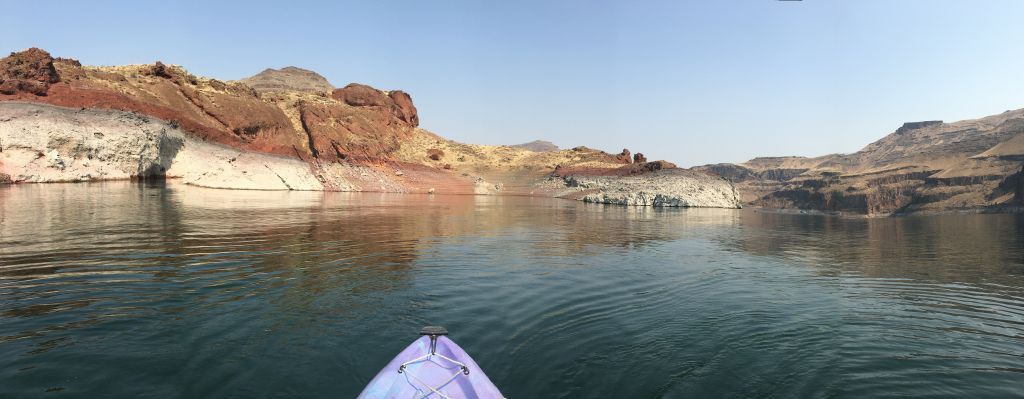
Who wouldn’t? Owyhee Lake. Photo: Chuck Thompson
Gibson and Sope also would like to see more regulation of recreators in the area. At the moment, people are free to drive recreational vehicles wherever they want in the Owyhees.
Gibson said it’s disturbing to see hikers post photos of tribal artifacts they brought home from the Owyhees, or people driving dirt bikes in sacred places, calling it a “desecration.”
“We wouldn’t go look for some artifacts in the cemeteries,” Gibson said. “It would feel pretty sick to do something like that, but it’s allowed to be done on our homelands. We don’t really have a say. We don’t have resources.”
Gibson hopes that more protections and resources will preserve the land for future generations of tribe members, so they can be taken out into the Owyhees. “When they show you a family member’s grave or something that is significant to you, that lasts within you as a child,” Gibson said.
“When you come back to the world out here, you think back on it like that’s the only clean place you can ever think of.”
Originally published by the Idaho Statesman, this story is re-published with permission.
Reporter Sally Krutzig covers local government, growth and breaking news for the Idaho Statesman. She previously covered the Idaho State Legislature for the Post Register.



